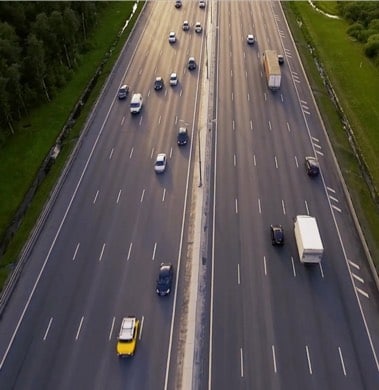Hire Freelance Animation Designers
Matt Gillespie
Matt is a designer with a decade of experience crafting user-centric strategies to design and build digital experiences for startups, Fortune 500 companies, advertising agencies, and individual clients. He's guided user research sessions, conducted user interviews, led marketing campaigns, built style guides, and published many websites and mobile apps.
Show MoreIsaac Kadosh
Isaac is a UX strategist who helps startups and enterprises gain value and competitive advantage via product strategy and design. He's worked with a wide range of startups and brands like Wix, Dynamic Team Sports, Shop Your Way, Doogma, and two of the largest companies based in Chicago, IL: Sears and Walgreens. Isaac also defines product/UX strategies and designs user-centric experiences for eCommerce, healthcare, automotive, and SaaS.
Show MoreMathieu Barre
Mathieu is a passionate visual designer who meticulously crafts UX/UI designs, product designs, web designs, and motion animations. He keeps up to date with industry trends via his research on substantial apps. He and his partner run a Paris-based mobile agency where he also works as an art director while his partner handles the visuals and branding. Mathieu expresses himself well and has worked for large companies and startups.
Show MoreMirko Zarkovic
Mirko is an interdisciplinary designer and director with over a decade of proven experience in tactile, motion, and interactive digital design. He has worked with international clients, studios, and agencies, creating design solutions for websites, brand identity, advertising material, and more. Mirko evolves with current trends while maintaining a solid core of influence and leadership.
Show MoreShammer Diaz
Shammer is a brand and digital designer with over ten years of experience. His breadth of skills varies from print to digital design. He defines himself as a chameleon; he can design for various clients while staying true to their brand's visual identity and extending it wherever needed or desired.
Show MoreEric Müller Moreno
Eric is an award-winning designer with more than ten years of industry experience and a focus on products. With expertise gained working with top companies like Forbes and Universal Music Group, he has created many B2B and B2C platforms and data visualizations. Eric's strategic way of working contributes to startup projects that need a holistic approach.
Show MoreDaniel Serrano
Daniel is a capable UI and UX designer with a strong focus on design and extensive experience in branding and marketing. He exceeds in communicating with clients ensuring that the product meets the client's requirements. With an entrepreneurial background, he has a great eye for detail for product design and UX. Daniel has a great aesthetic eye but always keeps in mind to maintain high standards for the usability and functionality of a product.
Show MoreDanny Rubyono
Danny is a seasoned visual and motion designer with over 22 years of experience collaborating with various creative agencies, Fortune 500 companies, innovative startups, and technology firms. He is also the owner of Duro Compagnie, a collective design boutique specializing in creating impactful motion design and visual communication. Leveraging his multi-disciplinary skillsets in 3D, print, animation, and user interface, Danny excels at delivering purposeful and memorable design experiences.
Show MoreAdam Connelly
Adam has deep experience in interaction design, graphic design, digital marketing, social media, influencer marketing, and advertising. His past clients include Apple, eBay, Microsoft, Pixar, Levi's, Barbie, Kraft, Coors, Williams-Sonoma, PayPal, Nike, and Lululemon. He's visually voracious, obsessed with aesthetics, and just wants to make everything more beautiful.
Show MoreHristo Kanchev
Hristo is a UI/UX designer with over a decade in the software development lifecycle and in transforming concepts and ideas into intuitive products and services that meet business objectives and improve human experiences. He also has an extensive background in visual design, creative direction, and front-end development.
Show MoreMario Stipetic
Mario is a UI and UX designer with a passion for great-quality design and over a decade of experience. He has worked for San Francisco/NYC-based startups and large enterprises such as ZTE. He is an expert in designing for iOS, SaaS products, eCommerce sites, and AR/AI apps. Recognition of note includes a nomination for the "Website of the Day" award at Awwwards. He has a master's degree in design of visual communication.
Show MoreDiscover More Animation Designers in the Toptal Network
Start Hiring











































































